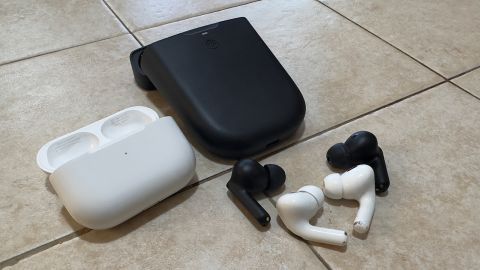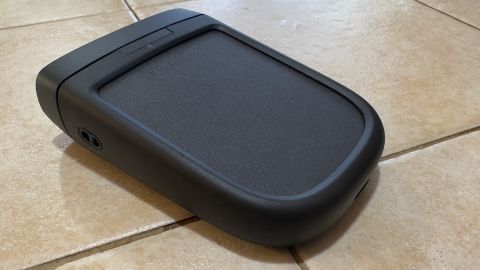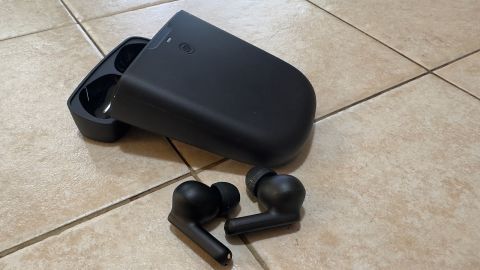What would you pay for nearly unlimited playtime on your earbuds, no matter where or how long you wear them? If you’re like me and listen to lots of music and podcasts using wireless earbuds, that’s an intriguing question.
Swedish company Urbanista is betting this nigh-unlimited playtime is worth $150, because that’s how much the company is charging for its new Phoenix solar-powered earbuds.
Though not the first solar-powered portable audio device (Urbanista also sells the Los Angeles solar-powered headphones, which use the same Powerfoyle technology to convert any light — not just sunlight — into power to keep your battery topped up and the music going) the Phoenix claim to be the world’s first solar-powered, self-charging wireless earbuds with active noise canceling and voice assistance integration.
So, you can wear these earbuds pretty much 24-7. But the question is: Would you want to?
The Urbanista Phoenix headphones offer an unlimited charge with its cutting edge solarcell — even without direct sunlight. And for $150, they are comfortable to wear and easy to use. But for those who care more about better sound and less about battery life, a splurge for something higher end might be worth your while.
Comfort, design and features
There’s a lot to like about the Phoenix headphones. The earbuds themselves are almost identical in design and size to my Apple AirPod Pros 2, except Urbanista’s come in black and desert rose colors. They are comfortable to wear, and it’s easy to forget them since they’re lightweight and comfy.

When fully charged, the company says you’ll get about eight hours of playtime, and the charging case gives you about 34 hours of reserve power. While I didn’t have a chance to time the case’s battery life, at 8 hours and 7 minutes, the earbuds clocked in pretty much on point with their rated playtime.
Other features include noise-reducing microphones, automatic detection when you put the earbuds into your ears, automatic power-off, support for the various voice assistants out there (Siri and Google are the two biggest ones), USB-C charging for when you don’t want to wait on the sun, and Bluetooth 5.2 for longer battery life and faster pairing. They have an IPX4 rating, so they’re resistant to most small splashes but are not waterproof.
In my experience, pairing was straightforward enough. Once I paired the earbuds to my phone using the Bluetooth settings, the included app picked them up right away and started giving me info on the charge level and how much reserve time I had. Switching between the noise canceling modes — full, transparency, and off — was easy enough in the app (a little more difficult using the earbuds themselves, as you’ll see below). The app also offered a decent selection of equalizer presets to choose from: Default (“suitable for a wide range of genres”), Speech (“optimized … for podcasts, audiobooks or radio”), Bass Boost (for “fresh hip hop beats”), Trebel Boost (“brings the details out of muffled recordings”), Energize (“suitable for workouts or that perfect Friday feeling” … wut?), and Balanced (“for all-day and night listening”). There is no custom EQ setting.

But the big draw for these earbuds is that the case can charge from either solar power or ambient light in your home or office thanks to the Exeger Powerfoyle solar cell. To test it out, I plopped the case with the earbuds in a southern facing window to charge them up. Within a couple of hours, I had a full charge, which was pretty awesome. After that, I just left them lying around different parts of the house to soak up the ambient light. The charge was just a trickle compared to the full southern exposure onslaught, but it was enough to keep them topped up throughout the day.
Using ambient light is a big deal because most solar cells react to sunlight only. This means you’ll likely never need a USB cable for these earbuds (although it has a USB-C port for fast charging). The charging case is ginormous, though, as it requires a lot of surface area for the solar cell. It measures 90 x 68 x 20mm and weighs 72g (80g with the earbuds inside). I can see these being extremely useful for power users who often find themselves away from a power source — hikers or campers, for example. Or teenagers who live with one bud in their ear all the time.
So, you absolutely can go all day and night listening to these things. But will you?
As technologically advanced these earbuds are in terms of charging, they just don’t sound fantastic. I found them to be bass-heavy, with a muffled mid-range. The high notes sounded tinny and a bit harsh. Compared to my more expensive Apple AirPods Pro 2 ($249), I found the earbuds sounded a bit cotton-y and soft. Not as much definition in the beats, and harsh high notes. But then again, they will cost you nearly $100 less.
The noise canceling left a bit to be desired as well. I found it to be more noise reduction than actual noise canceling. Again, as a comparison: the AirPods Pro 2 almost completely blocked street and construction noise, while the Urbanista Phoenix earbuds reduced the volume to a murmur. I could still hear the traffic, but it wasn’t too disturbing. The Apple AirPods, on the other hand, reduced my busy neighborhood to an eerie silence. So, if you’re not looking for 100% noise reduction, Urbanista’s offerings are fine.
My biggest complaint, though, was that the earbuds’ capacitive touch areas were difficult to trigger. These are spots on the outside of the earbuds that you tap to change the noise cancellation mode, trigger the voice assistant, or turn the volume up or down. (You can customize the touch area on both earbuds in the app.) But unfortunately, the touch surfaces are hard to use. It usually took 3-4 taps just to find the exact right spot on one of the earbuds to trigger the touch command.

| Price |
$149 |
$190 |
$150 |
|---|---|---|---|
| Battery Life |
8 hours playtime, 34 hours reserve |
8 hours playtime, 28 hours reserve |
8 hours playtime, 24 hours reserve |
| Charging |
USB-C and indoor and outdoor light |
USB-C, wireless |
USB-C |
| Noise cancellation |
Yes, hybrid active noise cancellation |
Yes, active noise cancellation with voice detection |
Yes, active noise cancellation |
| Connectivity |
Bluetooth 5.2 |
Bluetooth 5.3 BLE |
Bluetooth 5.0 |
| Frequency Response |
20hz to 20khz |
20hz to 20khz |
20hz to 20khz |
| Audio Codecs |
AAC, SBC |
AAC, SBC, Scalable Codec, 24-bit audio |
AAC, SBC |
| Price |
$149 |
$190 |
$150 |
For $150, the Urbanista Phoenix earbuds are a pretty good value. The solar charging is legitimately interesting and useful, but the overall experience is undermined by mediocre sound and tetchy controls on the buds themselves.
For people interested in longevity and not having to think about charging their earbuds during, say, a camping trip or a transatlantic flight, these can be a boon. Yet, for those who take their sound quality seriously, the lackluster audio performance of the Phoenix earbuds might be a dealbreaker. I listen to a lot of music, care a lot about the quality and rarely find myself with dead AirPods, so I’m sticking with my Apple products.
But I can certainly see the appeal of having earbuds that are pretty good, always charged and decently priced.






More News
Opinion | How We’ve Lost Our Moorings as a Society
At Trump Trial’s Closings, Lawyers Weave Facts Into Clashing Accounts
Opinion | Prosecutors Leave the Jury With a Mountain of Evidence Against Trump